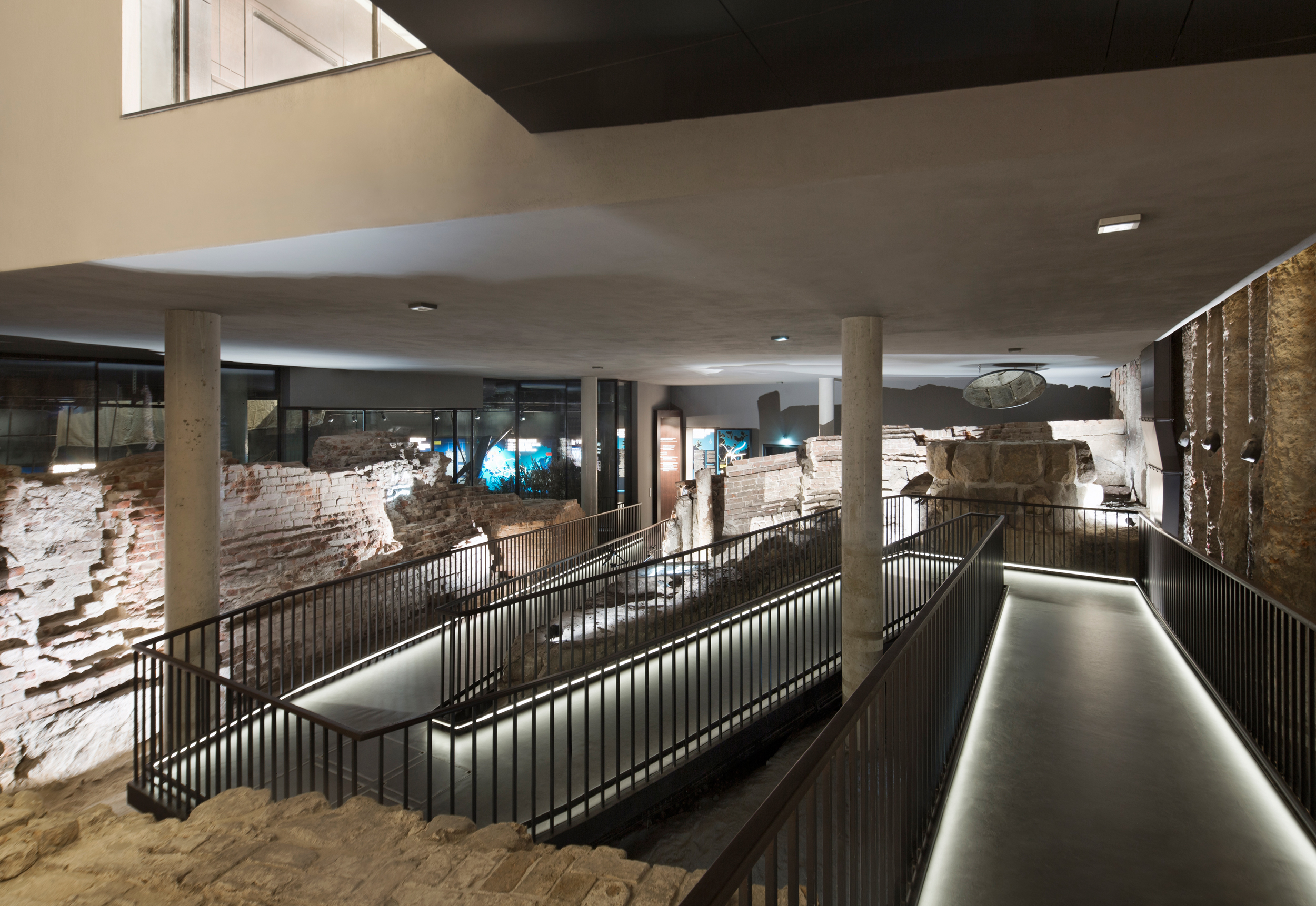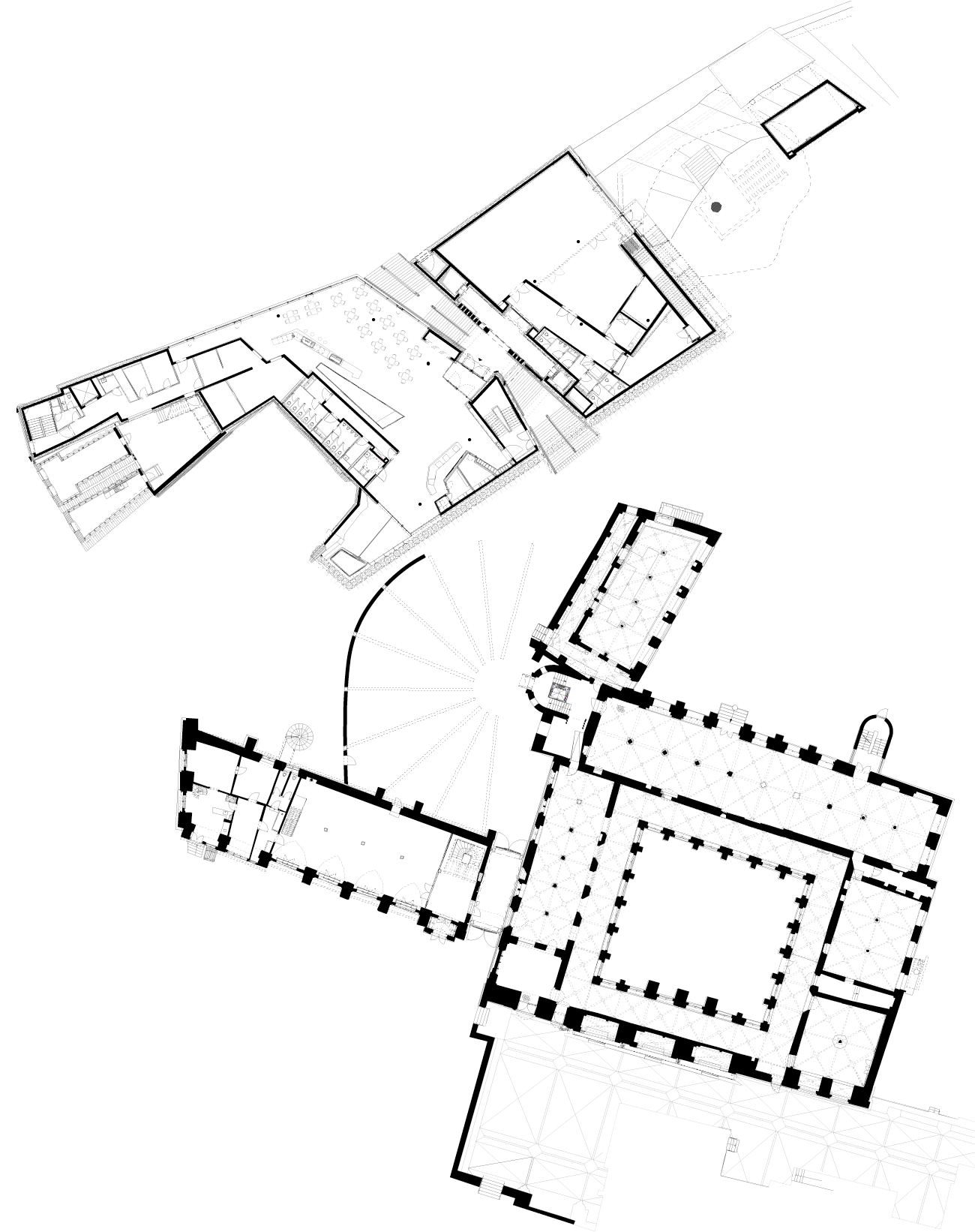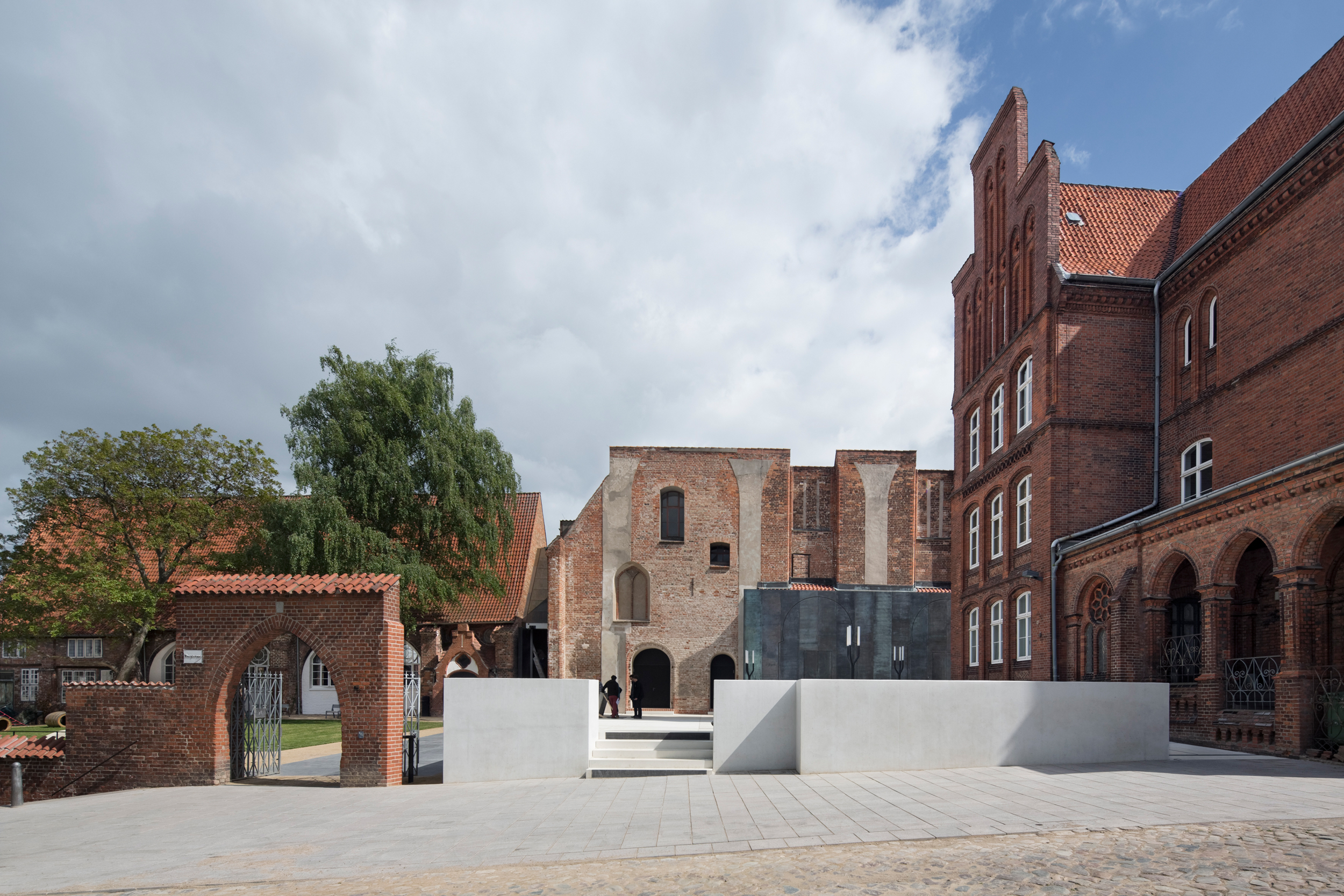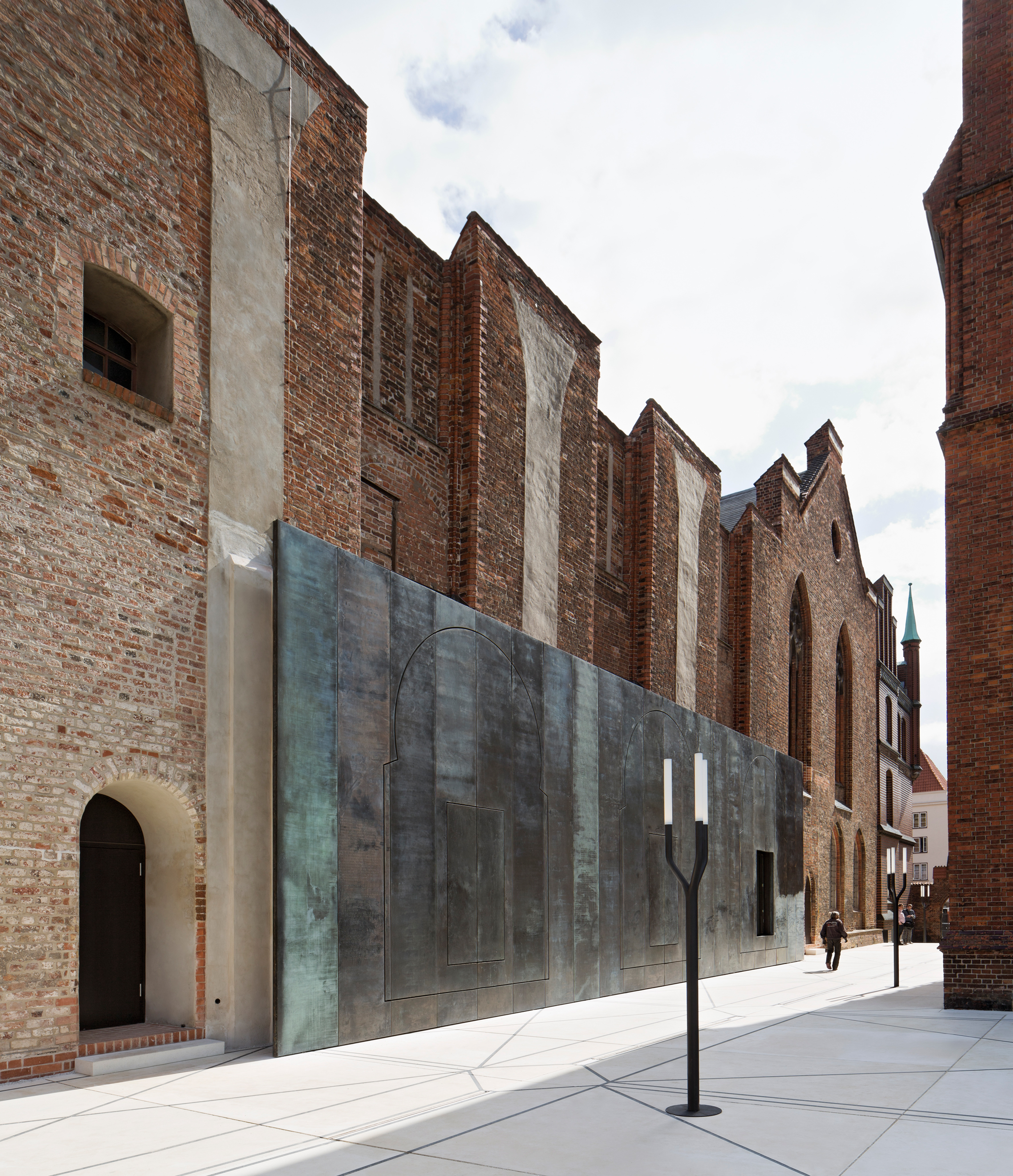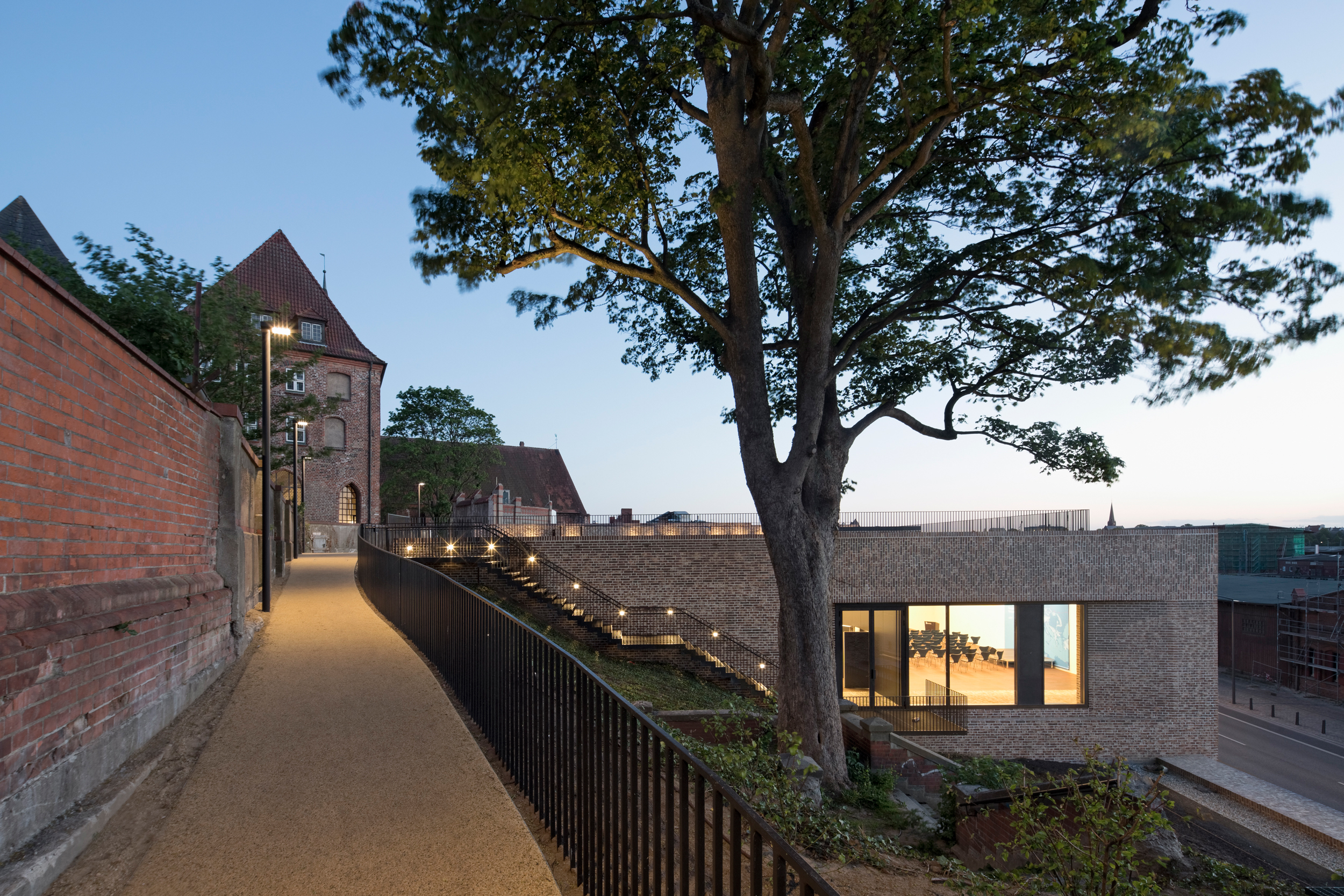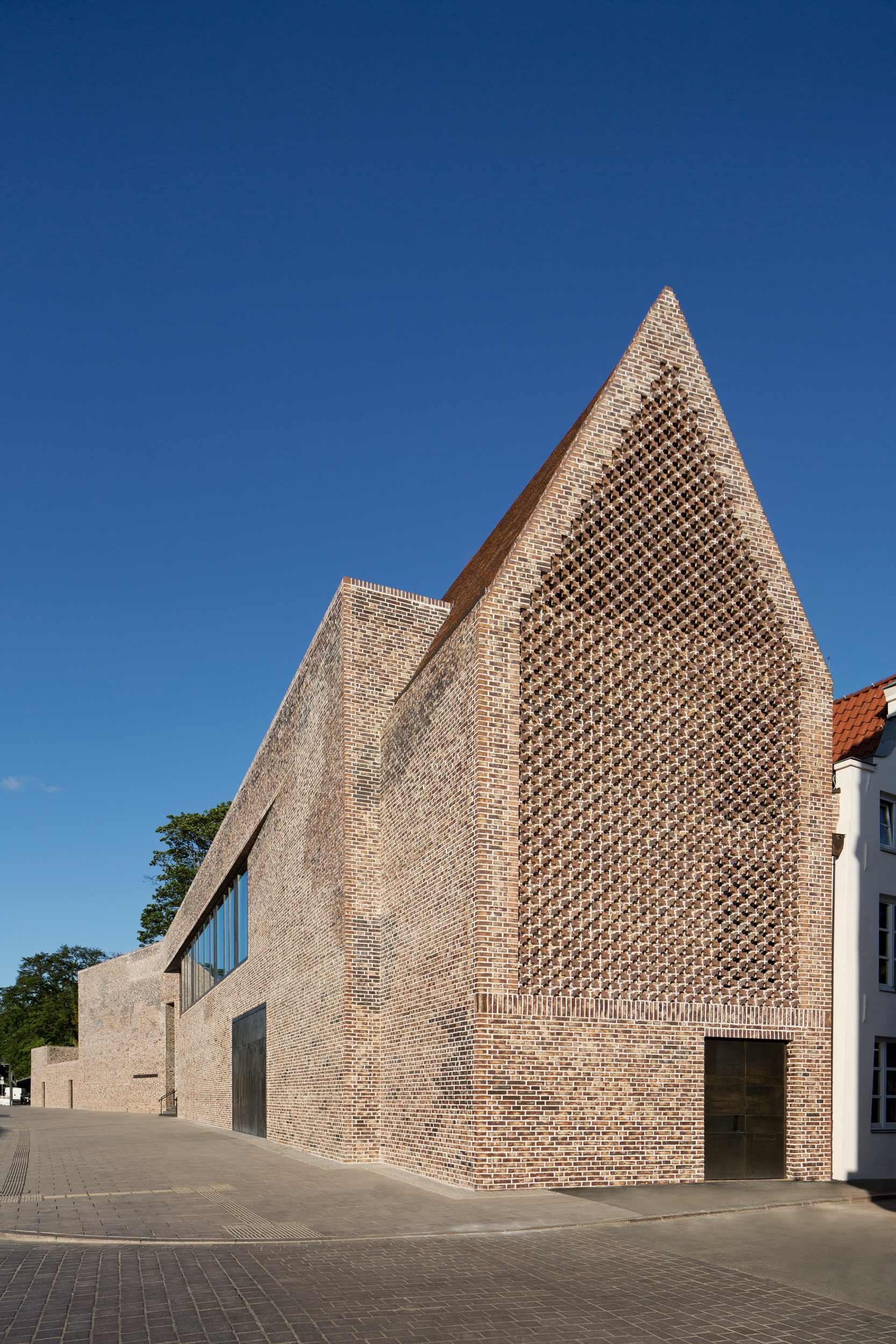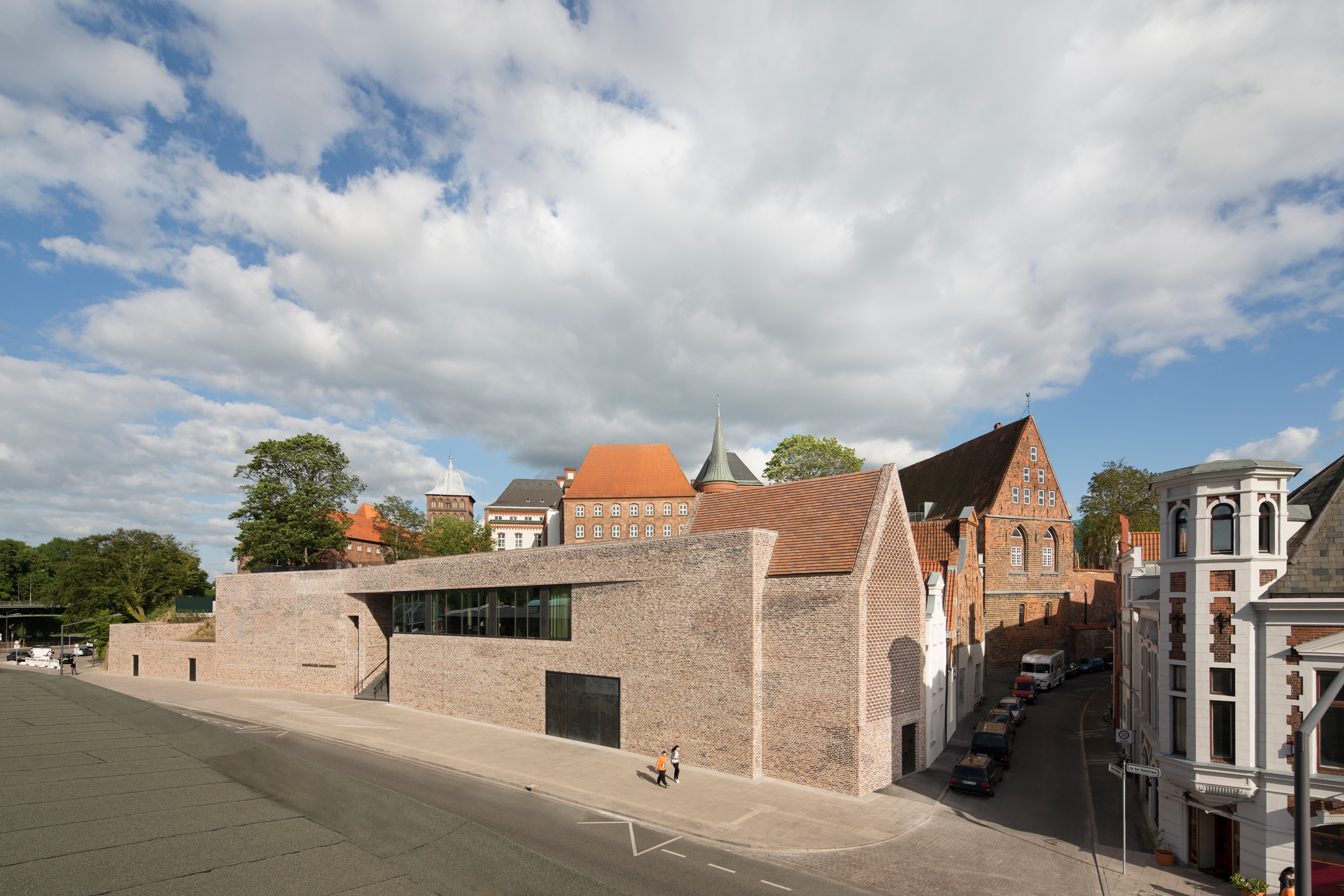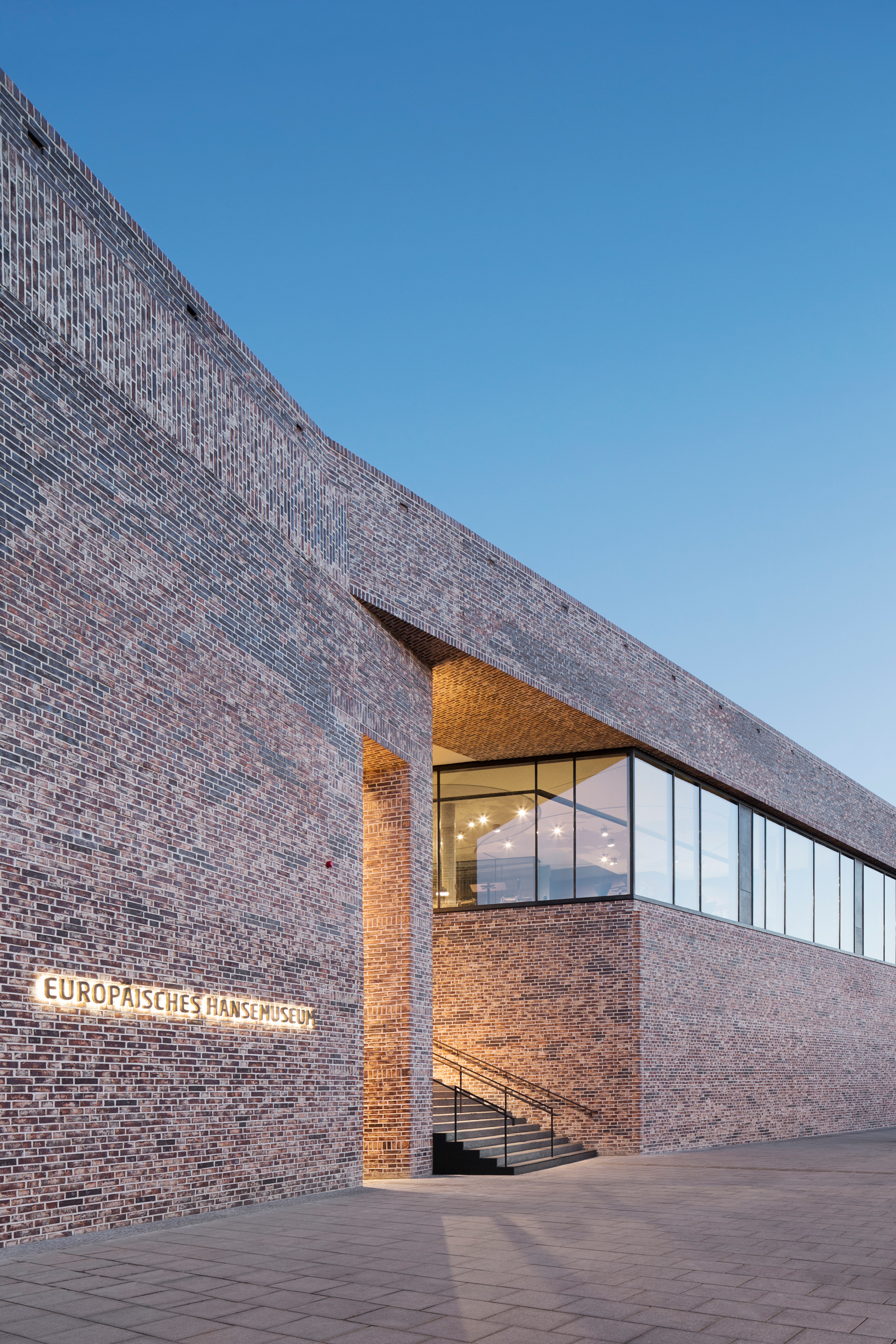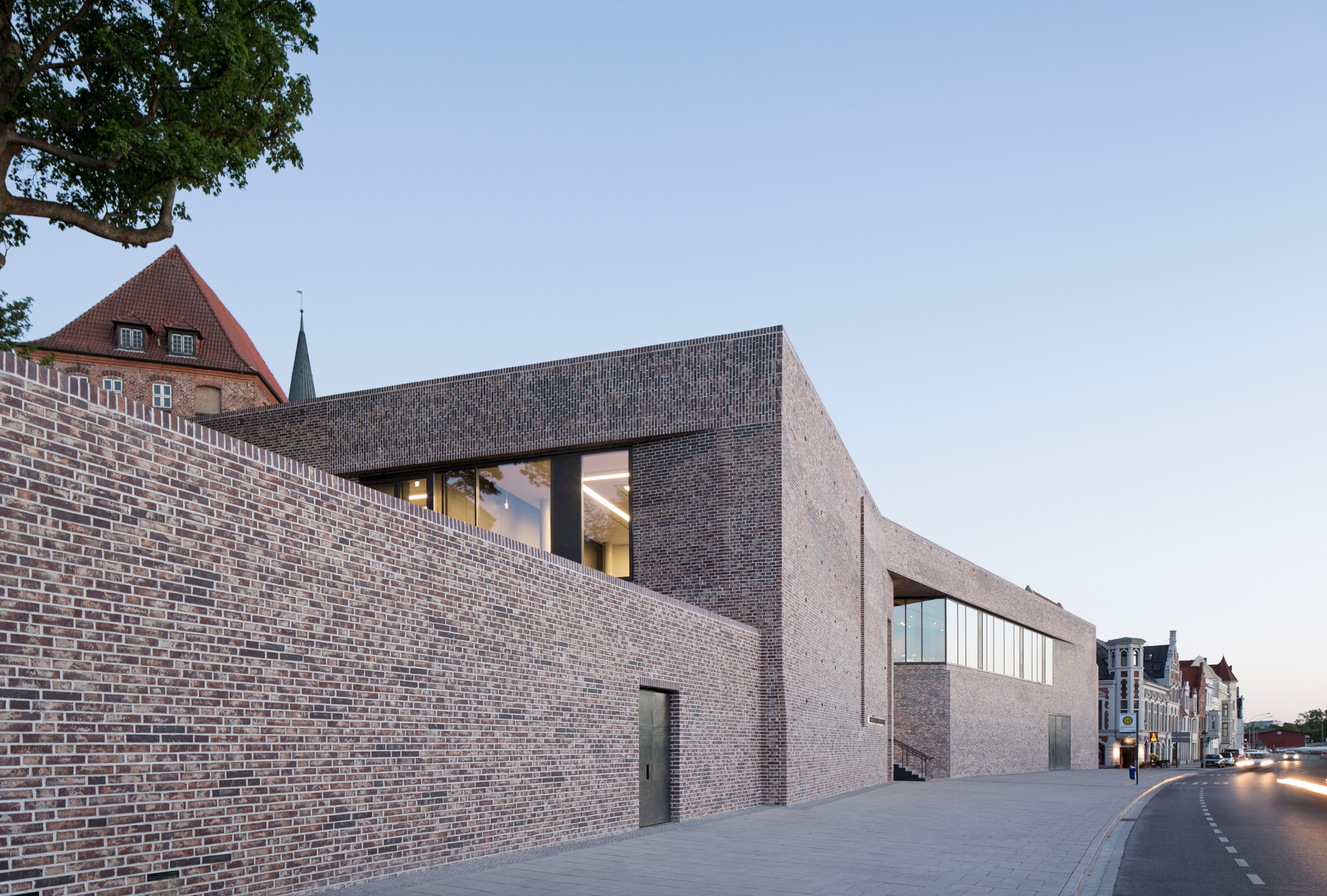Historical Modern: European Hanseatic Museum in Lübeck

Photo: Werner Huthmacher
A medieval fortress monastery marks the earliest settlement in the city of Lübeck. For the past few months, the new museum building by Hamburg's Andreas Heller architecture studio has stood here as well. The new structure gently nestles up against the fortress hill beneath the former monastery. From the historical harbour, both the hilltop and the old town can be reached via a central public stairway. This also provides access to the new building wing and the varying spatial continuum of the museum's outdoor area.
The history of this place and the past buildings associated with it, such as the Witches' Tower of the city's fortifications and an arsenal, provided important inspiration for the design of the new structure. Instead of the former city wall, the new museum now represents the medieval edge of town; its monolithic cubature and artisanal façade design evoke the past. Rough walls of hand-pressed, sharp-edged brick create a contrast to the bronze doors with their smooth surfaces and fine imprints. The various colour nuances of the individual bricks relax the exterior view.
With its combination of present and past, the new building melds with the surrounding environment. This is particularly clear at the western end of the new building: a gable-ended building completes the flat-roofed construction and continues the design language of the adjacent buildings. In a new interpretation of Lübeck's history, the façade at the gable end of the structure features extensive quatrefoil. This functions as a striking motif of the Redbrick Gothic style found as a decorative element in many other areas of the Hanseatic city. The bronze-coloured gates and protective cladding of the refurbished and restored fortress monastery have relief-like ornamentation. As a recurring element, bronze components can be found both inside and outside the medieval ensemble; they stand out from the historical parts of the building.
Along with the former fortress monastery and the newly designed outdoor areas, the new museum building covers around 7,400 m² and takes visitors on a journey through the history of the Hanseatic League. Archaeological digs are complemented with impressive spatial arrangements, preserved objects and the latest museum technology, all of which work to present this multifaceted exhibition concept.

